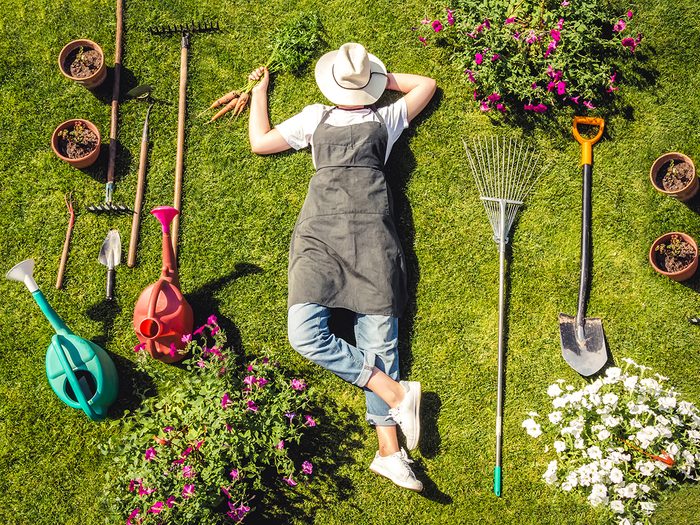
Gardening tips you’ll wish you’d known sooner
Between the weeding, watering, pruning and pest control, maintaining a garden can eat up a lot of your time—and money. These gardening tips can help ensure you get the biggest return on your investment, so you can spend more of your summer actually enjoying that beautiful green retreat you’ve created in your own back yard.
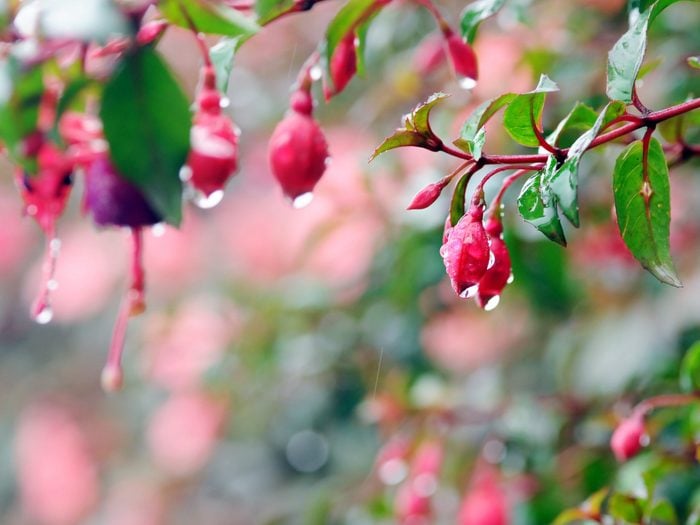
Play in the rain
There’s no better time to visit a garden centre than during a cloudburst. Nurseries are less crowded, lines are shorter and staff members are more available to answer your questions. Once the rain eases, go out and pull weeds—even clumps of crabgrass and deep-rooted dandelions pull easily out of wet soil.
New to nurseries and landscaping? Here’s what you should know before starting a garden.
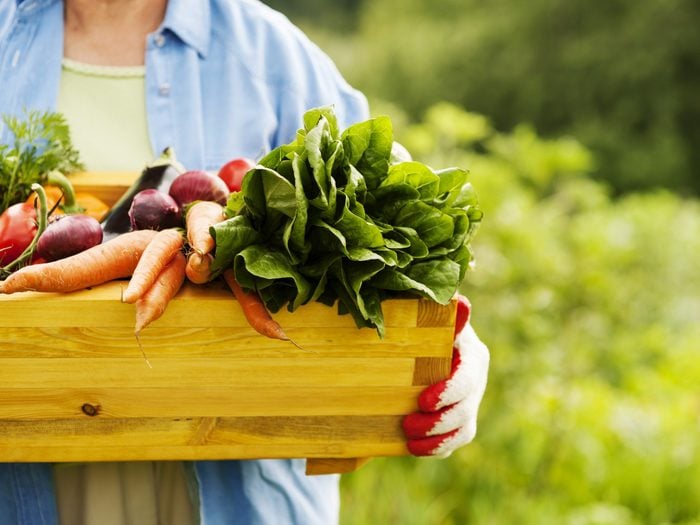
Plant vegetables in clear sight
Plant vegetables and herbs near your back or front door. Since you’ll see them often, you’ll remember to keep them watered. And they’ll be nearby when you need dinner fixings.
Here’s more expert advice on how to grow a vegetable garden, absolutely anywhere!
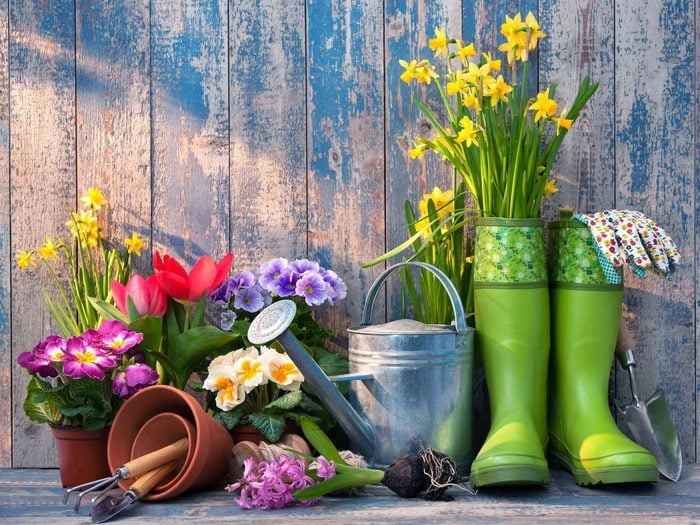
Start your garden with good soil
Work in compost, manure or dried peat moss for nutrient-rich planting beds. Amended soil is lighter, drains well, makes for easy weeding and allows roots to establish themselves more quickly.
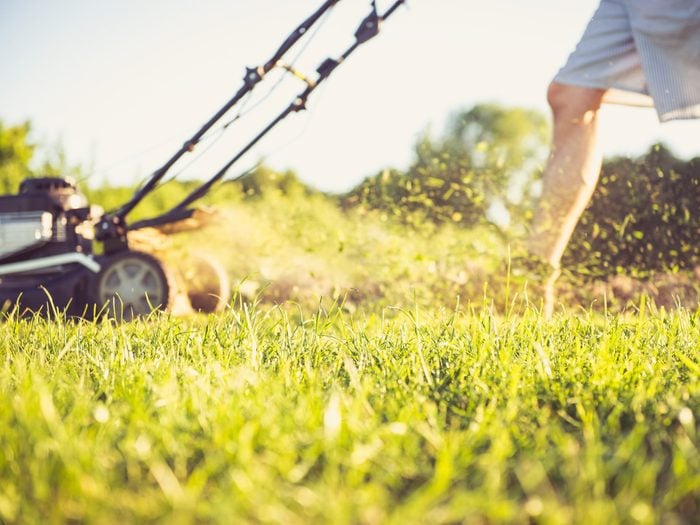
Shrink the size of your lawn
One of the best gardening tips that landscapers can offer is to shrink the size of your lawn. You’ll be amazed at how much time you’ll save on lawn chores simply by reducing the grass-covered areas in your yard. Combine trees, shrubs, boulders and decorative mulches to fashion eye-catching, maintenance-free island beds in your front and back yards.
Find out 18 things you should never do to your lawn.
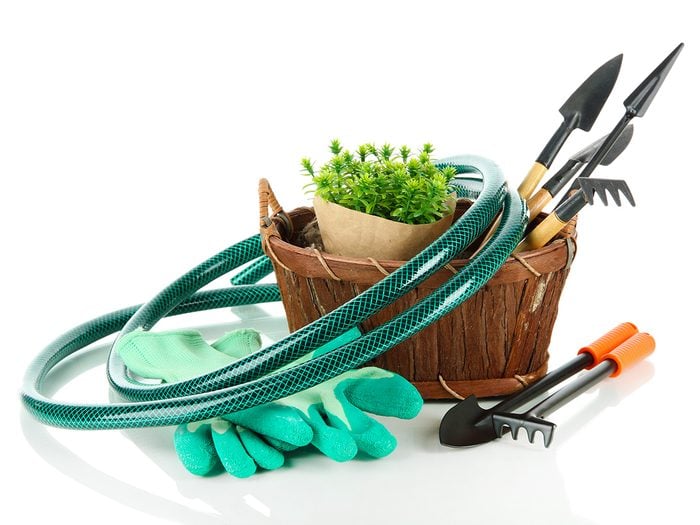
Keep garden tools handy
Stash a spare set of hand tools and garden twine in a waterproof container in your garden. That way, when you spot weeds, broken rose canes or a stem that needs tying up, you won’t have to run to the garage or potting shed for supplies.
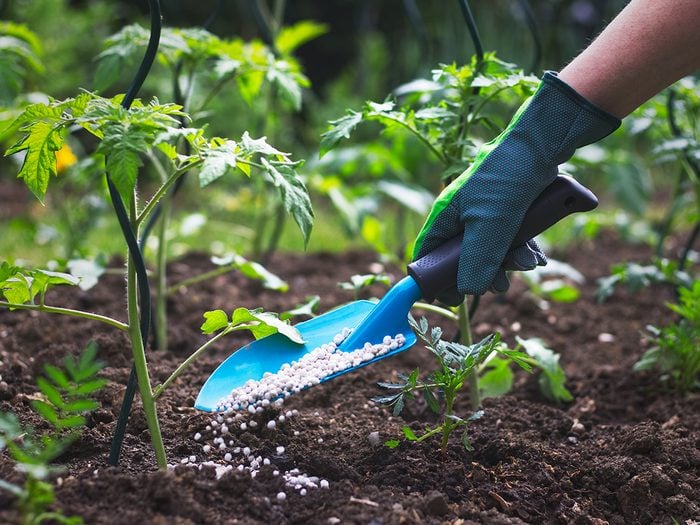
Fertilize smarter—not harder
Nourish gardens and containers with time-release fertilizers that continue feeding for long periods of time. That way, you won’t have to fertilize as frequently.
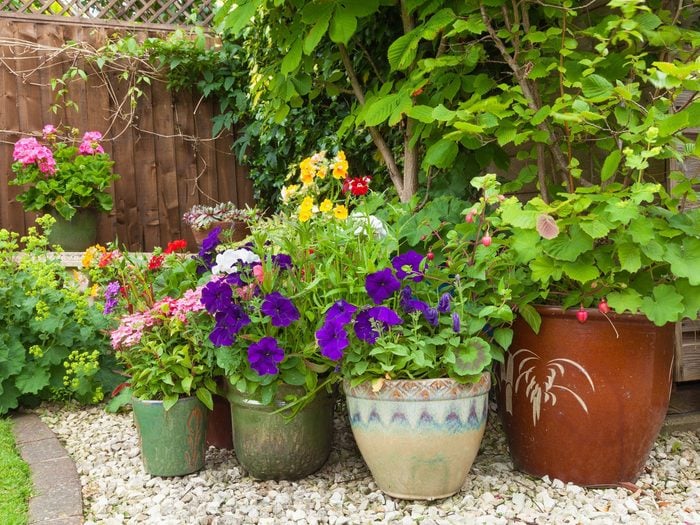
Grow a container garden
When you can’t get anything to grow beneath trees or along fences, set up a multi-tiered container garden in the shady location. Plant shade-loving perennials and compact shrubs in appropriately sized containers; set the containers on stands in varying heights. Or use simple green pots that blend into the background, and won’t compete with the flowering show.
Can’t decide what to grow in your containers? We’ve rounded up the best flowers for planters.
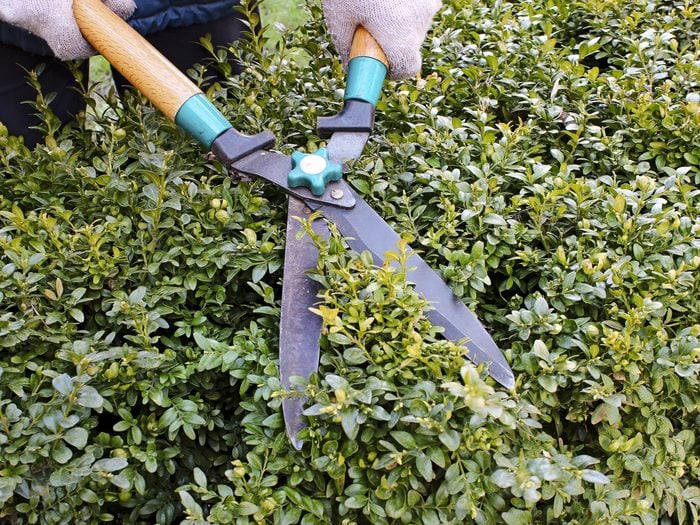
Prune evergreens later in the season
Wait to prune evergreens such as yews and boxwood until they’ve produced most of their new growth. As a result, you won’t have to prune them again until next year.
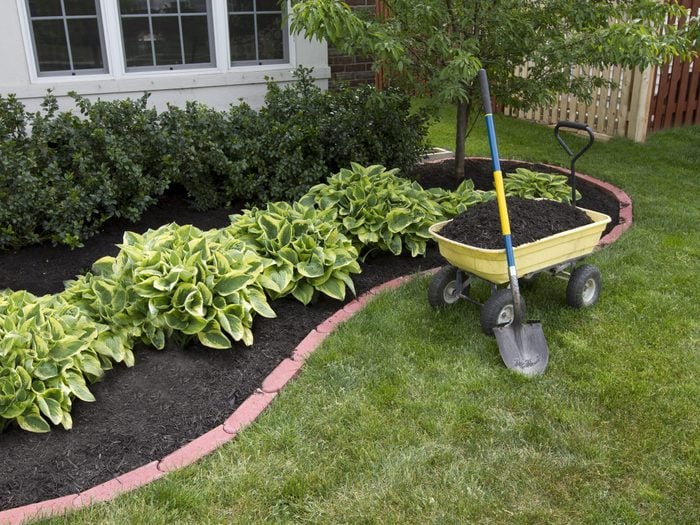
Add fresh mulch to your garden
Add fresh mulch to your gardens every year. A 2- to 3-inch layer of mulch keeps weeds from sprouting and helps the soil retain water, so you’ll be weeding and watering less often.
Tackle weeds naturally with these organic lawn care tips.
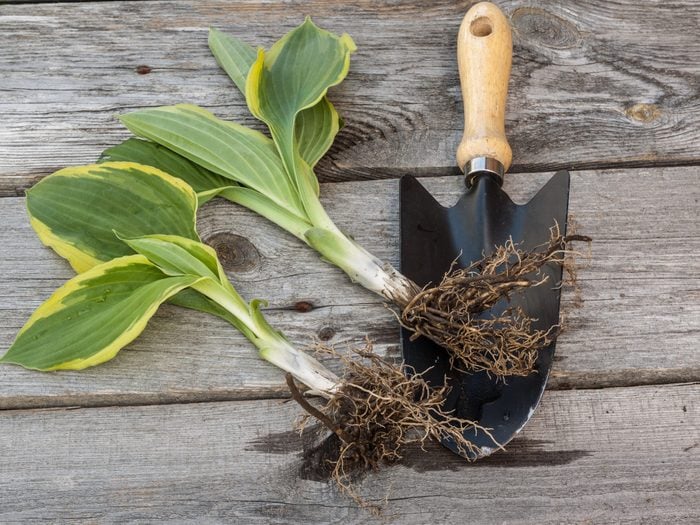
Gardening tips for hostas
Divide and transplant hostas as soon as you see leaf tips breaking through the ground—since the stems and leaves have yet to unfurl, it’ll be easy to cut the root-ball with a serrated knife. The planted divisions will leaf out beautifully in their new sites. You can divide and move fully leafed-out hostas, but you’re likely to break off leaves and stems in the process, which results in ragged-looking plants.
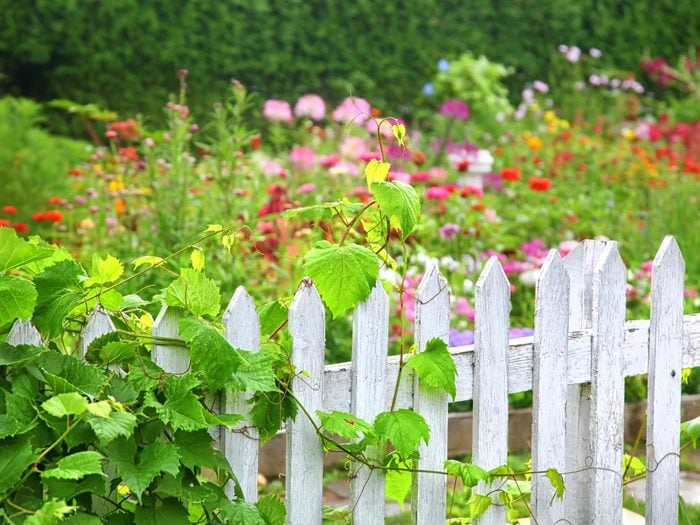
See what works in your neighbour’s garden
When walking or driving, take note of interesting plants and plant combinations. Write them down and take the list with you to the nursery—having an itemized list will speed up your shopping trips and reduce the urge to impulse-buy.
You’ll find plenty of inspiration in this gorgeous gallery of Canadian garden pictures.
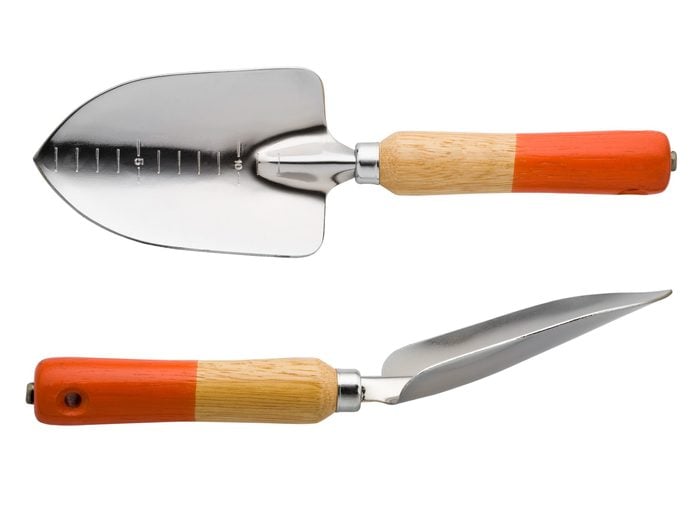
Consider colourful garden tools
Don’t waste a second searching for misplaced garden tools. Buy trowels, cultivators, forks and pruners with bright red or orange handles so you can quickly spot them amid the greenery.
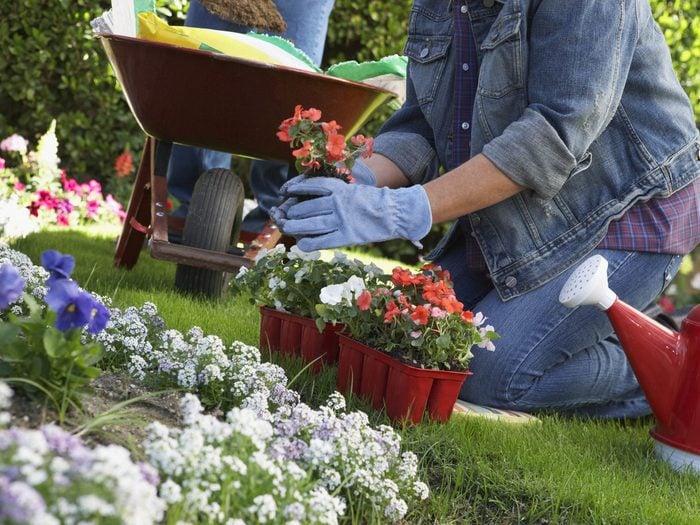
Maintain your gardening tools
Make sure your tools are clean and sharp—they’ll last longer and work better in the garden. Use ergonomically designed tools, kneepads, or kneeling mats to lessen stress on your joints—pain-free bodies also work more efficiently in the garden.
Find out the best mosquito repellent plants for your back yard.
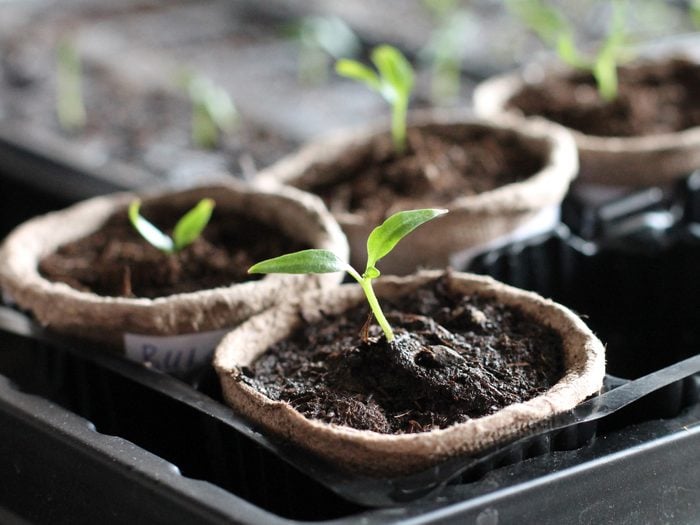
Take inventory of your garden
Make a running list of newly-added plants and their locations—this will help you remember what you planted where, which will prevent the inadvertent weeding (and replacing) of a “good plant.” Save perennial plant tags and store them near your favourite how-to gardening book to keep all your gardening tips and planting information in one spot.
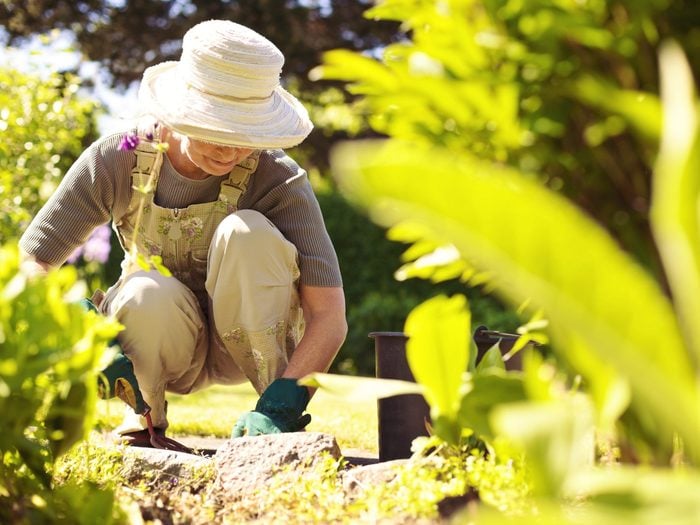
Invest in native plants
Buy improved varieties of plants and grasses that are native to your region. They’ll thrive with very little care and are likely to be the best-looking plants in your garden.
Working with a tiny yard? These urban garden ideas are perfect for small spaces.
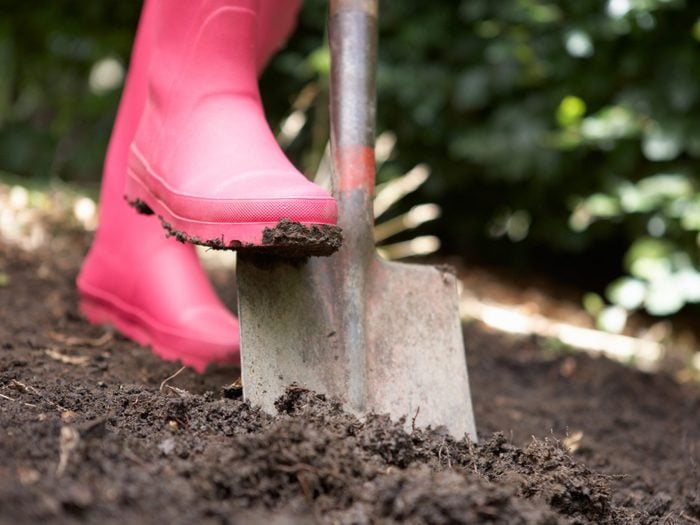
Dig once, plant many
When you’ve got a bag of tulip or lily bulbs to plant, or when using annuals to edge a border, dig a large, single planting hole instead of many smaller holes. Make sure it’s large enough for all the bulbs or plants to prevent overcrowding.
Psst—professional landscapers say you should never plant these flowers in your garden.
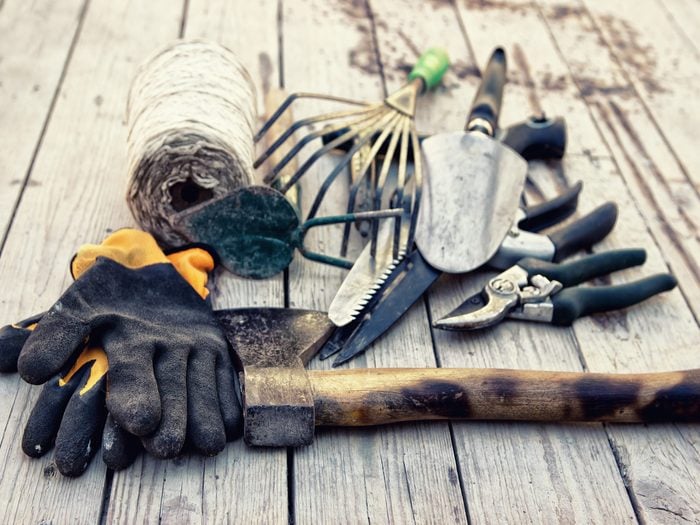
Be prepared
At the beginning of the season, stock up on gardening supplies like garden twine, twist ties, garden gloves, plant supports, plant markers and bags of compost to eliminate garden centre runs and the long lines on busy gardening days.
Find out why people are adding pool noodles to their planter pots.
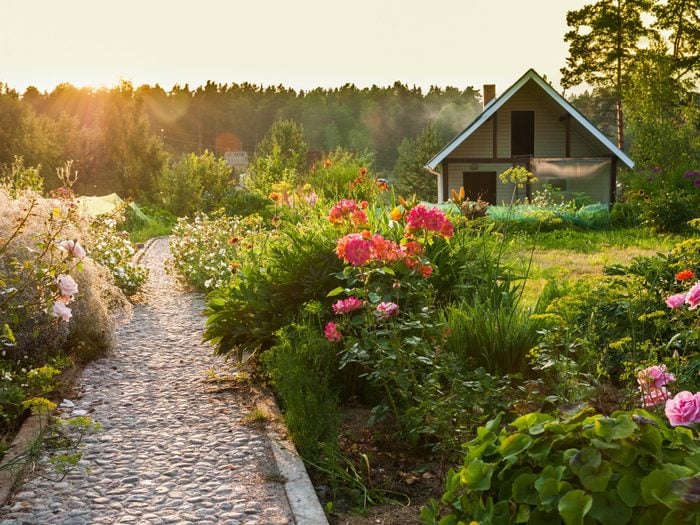
Take a garden tour (in your own back yard)
Walk around your garden every day and check plants for pests and diseases—the sooner you spot a problem, the sooner you can take curative measures, which means less work later.
Here are eight healing plants you can grow at home.
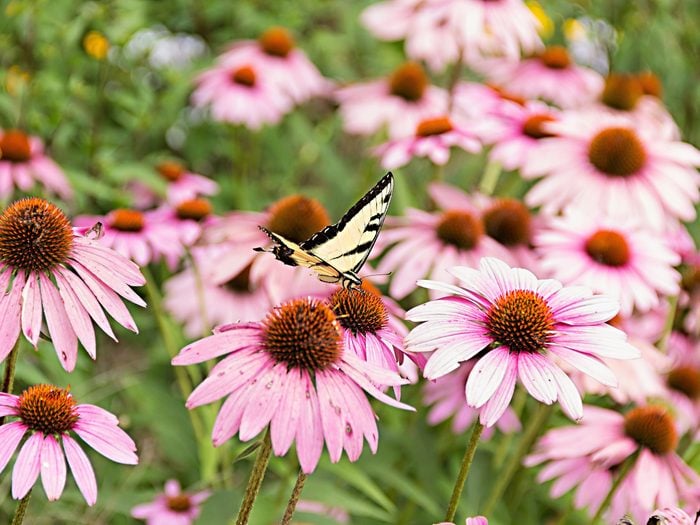
Let plants do their thing
Choose plant varieties that readily self-seed, such as corydalis, larkspur and purple coneflower (shown here), or that quickly naturalize, such as daffodils and daylilies, to fill out borders inexpensively.
Want to roll out the welcome mat for winged wonders? Find out which flowers attract butterflies and birds to your garden.